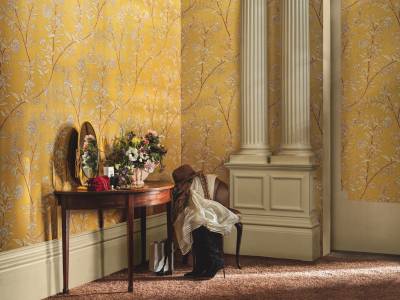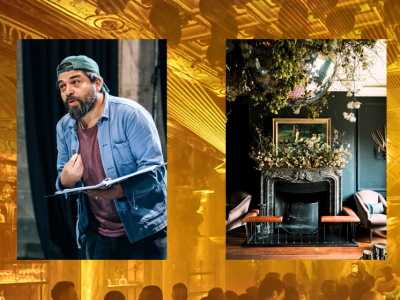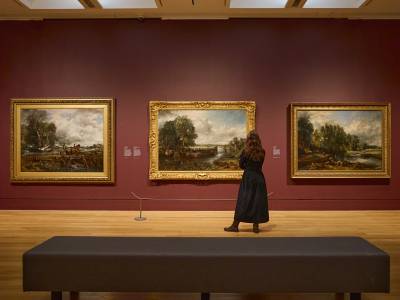It is no mean feat to hold a Royal Warrant of Appointment for nearly 70 years. Prestigious British wallpaper company Cole & Son was first granted its warrant in 1961, under Queen Elizabeth II. Now, as the brand celebrates its 150th anniversary, it has been awarded a renewed Royal Warrant by King Charles III, a huge honour in part received for its service to the Royal Household, where the design house’s wallpapers hang in some of the UK’s most important stately buildings, including Chatsworth House, Blickling Hall, Buckingham Palace and the Houses of Parliament. “To receive a Royal Warrant in 2024 requires an unwavering commitment to the highest standards of quality and craftsmanship,” says Marie Karlsson, Cole & Son’s Creative and Managing Director. Cole & Son’s passion for preserving the arts through the marriage of traditional techniques with contemporary innovation drives everything it produces, much as it did when block-printing specialist John Perry founded the company in a wallpaper mill in Islington in 1875. Even in the late 19th century, Perry was forward-thinking, pushing boundaries: he revived the art of hand-flocking, a process that imitates cut velvet. Perry’s most notable contributions to the interiors industry were the creation of a process to imitate the look and feel of lustrous silk, and developing a single colour surface printing machine to replicate the block-printing process in a rotary style.
How Cole & Son retained its Royal Warrant with Palace-Worthy Wallpaper
29th May 2025
Cole & Son’s exquisite wallpaper designs have adorned many a room for 150 years. The proud holder of a Royal Warrant since 1961, the company is evolving while keeping its heritage and tradition at the heart of all it does.
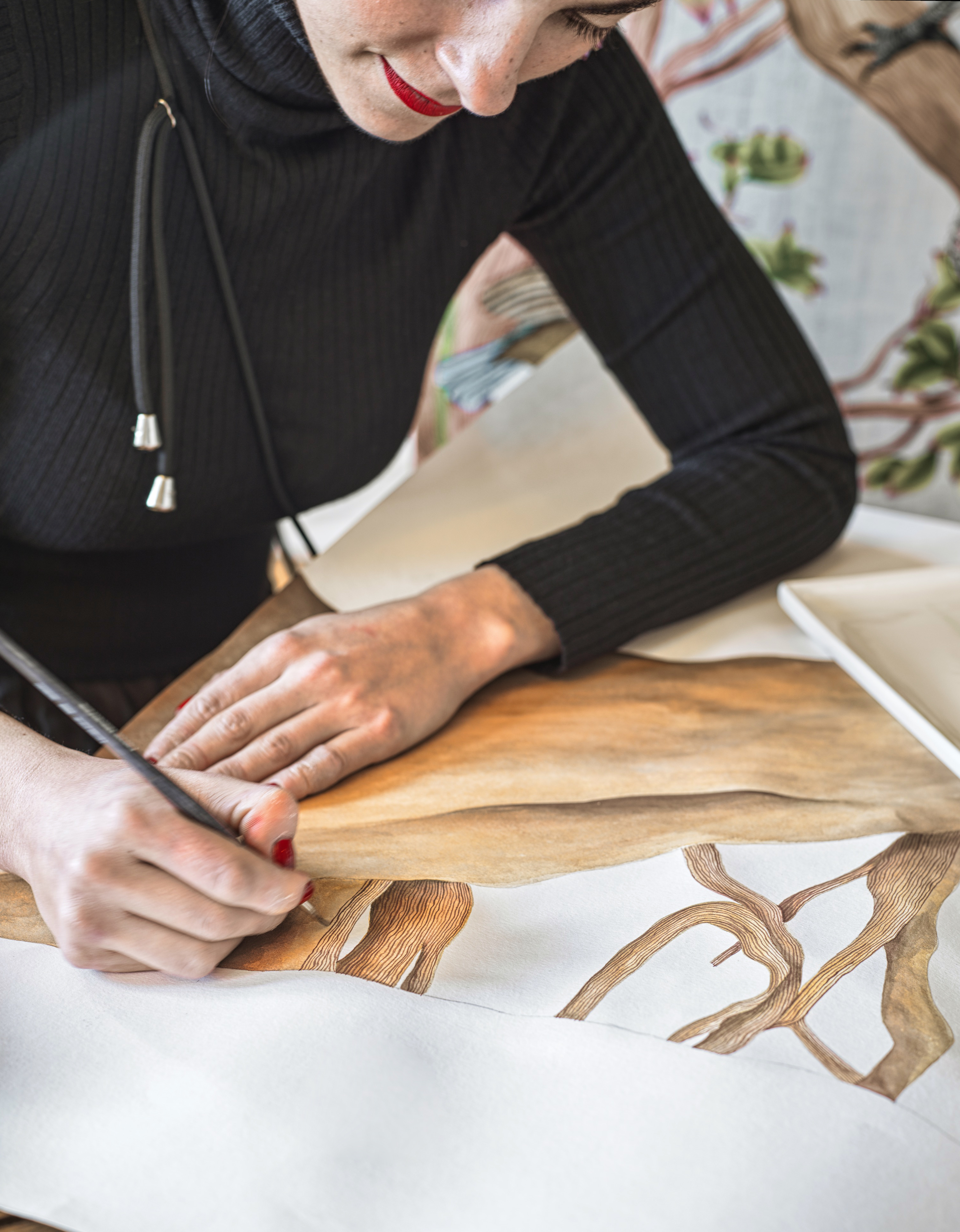
Sustainability was one of the Royal Household’s key criteria when it came to handing out Warrants late last year to more than 500 companies, from dry-cleaners and fishmongers to cobnut growers, roofers and coffee suppliers. “This focus was very good for companies like us, because wallpaper is a sustainable resource in that you don’t wallpaper every day. You maybe do it every seven or 10 years. Some people do it more often, most of us don’t.” It was also an opportunity for Karlsson to shine a light on Cole & Son’s award-winning ‘Fungi Forest’ wallpaper collaboration with British fashion designer Stella McCartney, used as the backdrop for her Future of Fashion exhibition held at Salone del Mobile in Milan in 2022. Printed on a new eco substrate derived from 79 per cent renewable fibres whose manufacturing process uses 30 per cent less greenhouse gases than traditional nonwoven wallcoverings, it has proven to be Cole & Son’s, and the interior design industry’s, most sustainable wallpaper to date.

Intrinsic to Cole & Son’s values is staying true to its traditions. As a Royal Warrant holder, consistency is essential. “You can’t do your craft in a different way, it has to be done as it was done, or at least as close as you can possibly do it,” Karlsson says. This doesn’t mean you can’t evolve, but there is an advantage in holding on to your heritage. In recent years, Cole & Son, as ‘an art atelier’, has taken an unusual step backwards, upping its traditional techniques such as handdrawing and painting their designs. “Isn’t that an interesting innovation in the most fast-moving time we have ever lived in?” Karlsson teases. While the rest of the world is scrabbling with embracing AI, the Cole & Son team has returned to how things were done over a century ago. “This is what makes Cole & Son unique. To maintain our craft, we need to create our own original designs, to keep propriety of those patterns. That is what people will pay extra for – they’re buying into British history and the stories of all those people, past and present, who have carried this company for generations.”
Cole & Son’s papers not only line the walls of castles and palaces, however, but also “loos and nightclubs”, Karlsson laughs. “A lot of people have been dancing against the beauty of a Cole & Son backdrop,” she winks. Of course, the Royal Warrant not only recognises the brand’s historical past, but it also celebrates its present. “While we need to be authentic in looking after our heritage, we also need to evolve,” she says. So alongside the forthcoming Classics Collection Vol I, a series of ‘analogue’ patterns such as Acanthus, Strawberry and Willow Branch – drawn from the brand’s iconic archive of more than 2,000 block-print designs and 500 screen-print patterns, “refined and recoloured, making them relevant for our audience today and tomorrow” – there are striking modernday collections including a third collaboration with South African design studio Ardmore, founded by Zimbabwean ceramic artist Fée Halsted in 1985.
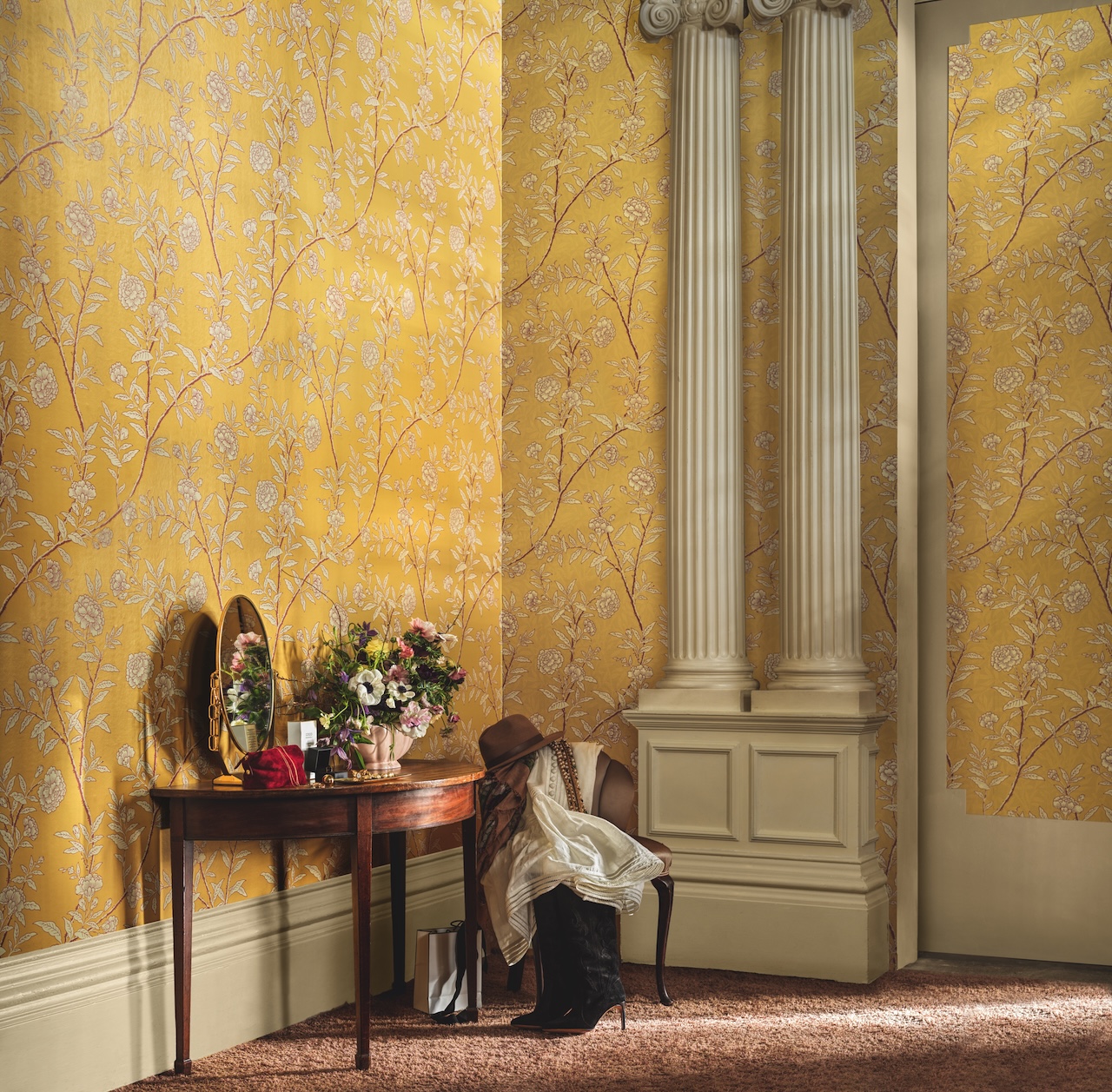
“This represents a quirky Cole & Son, where we have taken the savanna narrative hand-painted onto hand-thrown pieces by Ardmore’s Zulu artists to a whole new level with our own hand-drawings and paintings.” The ‘Baobab Tree’ design, shown during Paris Design Week in January in a beautiful apartment overlooking the Jardin du Palais Royal, is alive with a riot of exotic, colourful birds tucked between the flowers and fruit hanging from fat, sprawling branches of Africa’s most ancient tree. “In this, we really live art!” enthuses Karlsson. This summer, ‘Couture Carousel’, an illustrated fashion pattern in repeat, inspired by Harrods’ vintage magazine covers, will launch in honour of the famous department store’s 175th anniversary; in the autumn, there will be a collection featuring “a beautiful magnolia that I know is going to dress so many beautiful rooms all over the world”, she says. What is essential in any Cole & Son collection, Karlsson reassures, is that it will always be grounded in original designs dreamt up by her team. “These days, we are overloaded with images. Everything is pictures. We read in pictures. We speak in pictures. How many of us read what’s in the caption?” she says of our 21st-century obsession with social media platforms such as Instagram and Pinterest. “But Cole & Son is telling stories through its collections, so we need to bring new stories. We can’t look at what everybody else is doing, we need to bring new ones to the table,” she asserts.

A trip to gardens and forests in Japan with her design team, for example, inspired last autumn’s ‘Shinrin YOKU’ (‘Forest Bathing’) collection of 12 designs, hand-painted with Japanese traditional watercolours and calligraphy pencils and brushes. It oozes with ‘ikigai’, the Japanese ethos of finding meaning and joy through purpose and passion. Bonsai and traditional chinoiseries intertwine with kimono embroidery and meditation patterns, printed on natural materials such as Paperweave, Grasscloth and Natural Silk. “It’s so important for the team to travel, to see things in 3D, to spot new movements, new repeats, to experience new leaves, new f lowers, new gardens, new perspectives, new colours,” she says. “Our mission in life as a brand is to bring new things for people to play with and those things need to come from an organic perspective. That is the future.”
